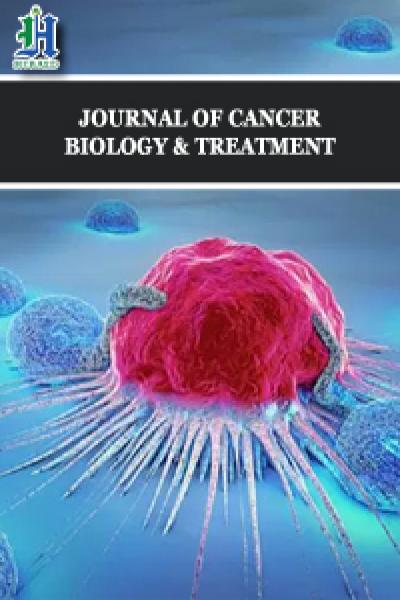
Nano Biosensor in detection of cancer through a Gas Sensor
*Corresponding Author(s):
Kalyan Babu KDepartment Of Electronics And Communication Engineering, Gitam University, Visakhapatnam, India
Tel:+91 8497917773,
Email:kalyankillana@gmail.com
Abstract
This Research article, I am presenting a technique called Direct Current Cyclic Voltammetry used in detection of cancer at an early stage through a gas sensor. Michael Clarke invented biosensor in 1962 to do experiments on bioelectric potentials. It consists of a Ligand and a transducer. Ligand is a Bio-element called Glucose oxidase-GODx. The transducer is to convert biological signal into an electrical signal used in detection of cancer at an early stage. The cancer is growing like exponential manner all around the world. It is found that 20 crore people are suffering from cancer around the world as on today. Jaw cancer, breast cancer, lung cancer, cervix cancer and pancreas cancers etc give the cancers. The research is going all around the world to detect cancer at early stage and after approaching a physician there may be a chance of curing at early stage rather going to advanced stage and finally, leading to death. Nanotechnology is an emerging technology in the fields of Biomedical engineering, Biotechnology and Biosciences. There was a saying by an eminent scientist regarding nanotechnology that “there is a lot of room in the down”. This statement is true as far as nanotechnology is concerned. Nano refers to 10 exp (-9), which is thinner than a hair strip. The materials used in nanotechnology are graphene, nano wires and nano carbon tubes. Coming to gas sensor, the gas, which is a lifeline for all of us, is none other than oxygen.
The gas (oxygen) is taken into consideration for detecting the cancer pathogen at the earliest. Therefore, I finally conclude the abstract by specifying that cancer can be detected by oxygen sensor at early stage basing upon the gas content.
Keywords
ABBREVIATIONS
DCCV: Direct Current Cyclic Voltammetry
CNT: Carbon Nanotube
BME: Biomedical Engineering
BJT: Bipolar Junction Transistor
JFET: Junction Field Effect Transistor
GaAs: Gallium Arsenide
INTRODUCTION
The Biosensor can be treated as Bio-sensing element, which was used to detect diabetes around 1970’s and 1980’s. It contains a ligand [1] and a transducer [1]. A ligand is one whose characteristic is a biological nature.
The ligand used in my work is GODx [2] called Glucose Oxidase, which is a very costly chemical and is used for detection of cancer pathogen. This is also referred to as enzyme.
The governing equation of my work is E + S→ESC + P [2].
E stands for Enzyme, S stands for Substrate, ESC stands for Enzyme Substrate Complex, and P stands for Product [2]. The product is oxygen gas, which is measured in terms of current ranging from milli amps to fempto amperes.
Soon the research on biosensors increased to detect various disease causing pathogens at early stage. It extended to detect measles, chicken pox, homophiles influenza etc. Now my research includes designing a biosensor [2] that can detect cancer at early stage (Meta stage) at our home like a thermometer which is used to detect fever at what stage it is. The biosensor contains a biological element called glucose oxidase, which detects the pathogen. The technique of disease finding pathogen is done through direct current cyclic voltammetry, which involves release of oxygen as its output. The output gas is measured in terms of current in milli amperes, microamperes and pico amperes to femto amperes. This process is similar to photo synthesis which take the carbon dioxide as input and produce oxygen as output. The calibration of oxygen is taken into current of order as specified above.
MATERIALS AND METHODS
The experimental section involves a lot of steps to be followed before going for final detection of cancer.
EXPERIMENTAL PROCEDURE
- Take a biosensor with three electrodes namely working electrode, reference electrode and counter electrode. The working electrode is made of stainless steel, glassy carbon, reference electrode is made of silver, or silver chloride and lastly counter electrode is made of platinum or calomel.
- The substrate is ground area of the biosensor, which is generally made of glass, silica, transistors and JFETS and Ga Al AS [3].
- The software used in this process of detection is Electro-Com software and the corresponding data is plotted in ORIGIN software.
- The experimental setup is given by connecting biosensor to PC having electro com software.
- The procedure is given by testing the biosensor with Ferro-ferry solution to make the biosensor get ready for detection.
- After Ferro-ferry test, it is tested for PANI (Electro chemical polymerization of Aniline).
Next the biosensor is tested with glucose oxidase as catalyst, which fastens the reaction between glucose oxidase and analyte. - Analyte [4] means the analysis on which the process is carried out. In this case, analyte is blood sample.
- The analyte is pricked from human beings through noninvasive methods and dropped casted over the biosensor containing glucose oxidase which is on glass substrate.
- The reaction takes place between analyte and GODX and produces corresponding wave forms for oxidation and reduction cycles.
- The healthy human blood gives high range of current order of milliamperes to microamperes, whereas the cancer cell produces current of order of nanoamperes to picoamperes or even femtoamperes.
E stands for Enzyme is nothing but glucose oxidase which was used for speeding up the reaction, S stands for Substrate, ESC stands for Enzyme Substrate Complex and P stands for Product.
CONCLUSION
In this paper, I could differentiate non-cancerous cells and cancerous cells through a gas sensor, which is nanoamperometric biosensor.
The output gas is measured in terms of current in milliamps, microamps, picoamps, nanoamps and femptoamps (Table 1).
| Current | Pathogen | Result |
| Milliamperes | No | Non-cancerous cell |
| Microamperes | Slight | Cancer in metastage |
| Nanoamperes | Present | Cancer in above the meta stage |
| Picoamperes | Present | Cancer in advanced stage |
| Femptoamperes | Present | Cancer resulting death |
Table 1: Dynamic and static light scattering data for PIC micelles in 0.1 M NaCl.
The above table 1 represents the results of biosensor in early detection of cancer. If the output current is of order of milliamperes, there is no cancer. If the output current is of femptoamperes, that shows that the cancer is in highly advanced stage.
GOVERNING EQUATIONS
(Courtesy: Taylor Equation) [5]
Where E stands for Enzyme, S stands for Substrate, n represents no of cancer molecules which are tending up to infinity in a cancer patient blood sample, z represents no of enzyme molecules and a represents normal living cells.(Courtesy: Cauchy’s integral) [5]
In the above equation, if z=a, the value of f (a) becomes infinite, which shows a cancer cell growth rising in exponential manner. Programming is Matlab software [6].
Figure 1 illustrates the killing of normal cells by carcinoma (Cancer) pathogen. The result becomes to zero after a stipulated amount of time. 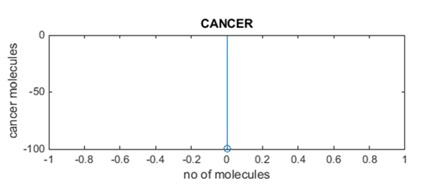
Figure 1: Illustration of killing of normal cells by carcinoma (Cancer) pathogen.- Courtesy: Exponential Series [5].
Figure 2 represents the exponential growth of cancer in a human body. This is simulated in Matlab17 software by giving numerical values to be variables. The numerical simulation is carry with time on X-axis and growth of cancer cell on Y-axis. The cancer growth is very high order of 10^7.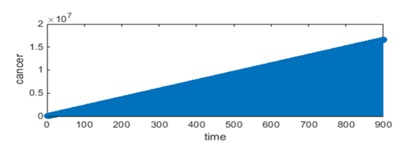
Figure 2: Exponential growth of cancer in a human body.this is from divergence theorem [5].
E: Enzyme; ESC-Enzyme Substrate Complex; S-Substrate
Figure 3 is a plot of healthy molecules without cancer pathogen.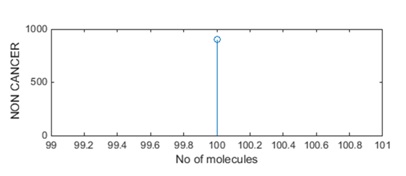
Figure 3: Plot of healthy molecules without cancer pathogen.[5].
"n" represents number of healthy molecules.
Figure 4 represents a healthy living cell of a person is not having any cancer. The time is taken on X-axis and multiplication of healthy cells as a part of metabolism.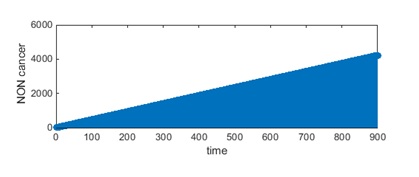
Figure 4: Represents healthy living cell of a person is not having any cancer.
GAS SENSING
In this paper I present nano amperometric biosensor is used as a gas sensor (oxygen detection), generally gas sensors are used in automobile industry but in the field of Electronics, Biomedical Engineering, Biotechnology [7] it is used for pathogen detection like cancer detection at what stage it is.
NANO-TECHNOLOGY
Nanotechnology is emerging field of Biotechnology. Out of nano materials graphene is best suited for biological applications. In this paper, grapheme [8] is embossed on top layer of the biosensor and so it is called Nanobiosensor, which is high versatile device in detection of cancer pathogen.
REFERENCES
- Instrument transducers, Chapter 5. Pg no: 301-312.
- Baronus R, Feliksas I, Juozas K (2010) Mathematical modelling of Biosensors. Springer, Berlin, Germany.
- Pucknell DA, VLSI. Prentice Hall, New Jersey, United States.
- Mauro F, Abraham L, James L (2006) 3D Micro- and Nanofabrication and Their Medical Application In: Di Fabrizio E, Perennes F, Romanato F, Cabrini S, Cojoc D et al. (eds.). Biological and Biomedical Nanotechnology. Springer, Berlin, Germany.
- Grewal BS, Higher Engineering Mathematics. Khanna Publishers, New Delhi, India.
- mathworks.com
- Mauro F, Abraham L, James L (2006) Biological and Biomedical Nanotechnology, In: He P, Dai L (eds.). Carbon Nanotube Biosensors. Springer, Berlin, Germany.
- Università Degli Studi Di Trieste, Functionalization and applications of carbon Nano horns and carbon onions. Università Degli Studi Di Trieste, Trieste, Italy.
Citation: Babu KK (2017) Nano Biosensor in detection of cancer through a Gas Sensor. J Cancer Biol Treat 4: 012.
Copyright: © 2017 Kalyan Babu K, et al. This is an open-access article distributed under the terms of the Creative Commons Attribution License, which permits unrestricted use, distribution, and reproduction in any medium, provided the original author and source are credited.
